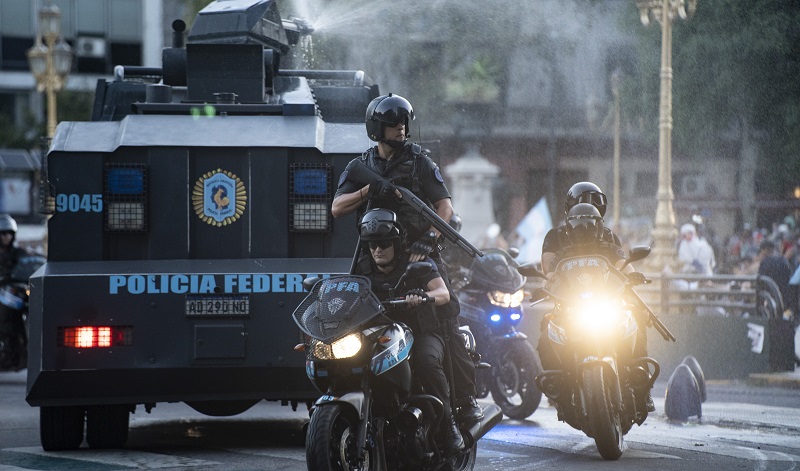
People and institutions speak through words and also through silences. Cristina Kirchner knows this well. She has known how to use hers to do politics on the national scene on many occasions. As she did during the first two months of Milei’s government, while she unleashed a fierce adjustment against the working people.
This Wednesday He broke that almost total silence through a 33-page document in which he analyzes the policy of the national government within the framework of giving his most general vision of the economic models that the country could or should adopt. He has written about this our colleague Esteban Mercatante a very complete note. We refer readers to that article.
However, There is another silence – and a very important one – in the long document. Cristina Kirchner does not speak directly about repression that took place for a week against thousands of protesters in front of Congress. A repression that suffered neighborhood assemblies, cultural assemblies, social organizations, combative unions and the left.
A repression that went as far as shooting protesters in the face. Lawyer Matías Aufieri (Center for Professionals for Human Rights) was shot in the eye by a rubber bullet, causing serious injuries. His evolution is still complex. Journalists and photojournalists were also repressed, leading directly to arrest.. An attack on freedom of the press.
Not only does he not talk about the repression of those days. He does not speak or denounce the repressive Protocol of Patricia Bullrich, which has been applied against the right to demonstrate by the national government. This protocol is a fundamental part of the adjustment policy along with the mega DNU, the Caputazo and the defeated Omnibus Law. It is impossible not to report it.
Why doesn’t the vice president do it? The explanations can be many. Let’s start with the most general one. Despite the speeches, Kirchnerism did repress social protest. In the years from 2003 to 2015, there were many workers’ and popular struggles that suffered repression by federal and provincial forces. Fights for the right to housing, like the one that took place in the Indoamerican Park and culminated in a fierce repression that left several people dead. Emblematic struggles against layoffs and employer attacks such as those that occurred in the Floating Casino (2008); Kraft (2009) or Lear (2014), just to name a few.
In the last of these workers’ fights, Sergio Berni was at the forefront of the repressive actions many times.. Precisely in this conflict, what the former vice president would call was at stake. “job update”. The multinational was trying to advance against workers’ rights with the complicity of the bureaucratic leadership of Smata. It sought to reduce the salaries of new workers by 30%. The combative internal commission and the worker base resisted.
In that In 2014, Kirchnerism promoted a protocol to “regulate social protest.” That is, for ban picketing. That March 1, at the opening of ordinary sessions of Congress, the then president Cristina Kirchner had asked for “a norm of respect and urban coexistence,” because “everyone has the right to protest, but not by blocking the streets, preventing “People go to work.” Official deputies responded by presenting a project: signed by Juan Manuel Pedrini, Carlos Kunkel, María Teresa García, Sandra Mendoza, Diana Conti and Gustavo Campos, among others.
If we go further in time, In the Government led by Alberto Fernández and Cristina Kirchner there were also repressions. It is impossible to forget the one led (again) by Sergio Berni, in October 2020 against poor families in Guernica, whose only “crime” had been trying to obtain a plot of land to make possible the right to one’s own home. In the name of the interests of a private neighborhood, the bulldozers passed over the humble boxes built in the mud.
Cristina’s silence also has another leg. Your letter offers to negotiate the adjustment. He says he rejects a wild neoliberal adjustment, but agrees to discuss what he calls “job update”, euphemism to refer to greater precariousness for the working class. Proposes negotiate the forms of privatization, accepting that part of the adjustment agenda. He admits to talking about “state efficiency” while attacking teachers’ right to strike just when Milei is adjusting everything to public education.
In the 33 pages by Cristina Kirchner concepts and data abound. Calls to fight and resistance are missing. They are also missing, they denounce a central component of the adjustment: repression.
Source: www.laizquierdadiario.com

